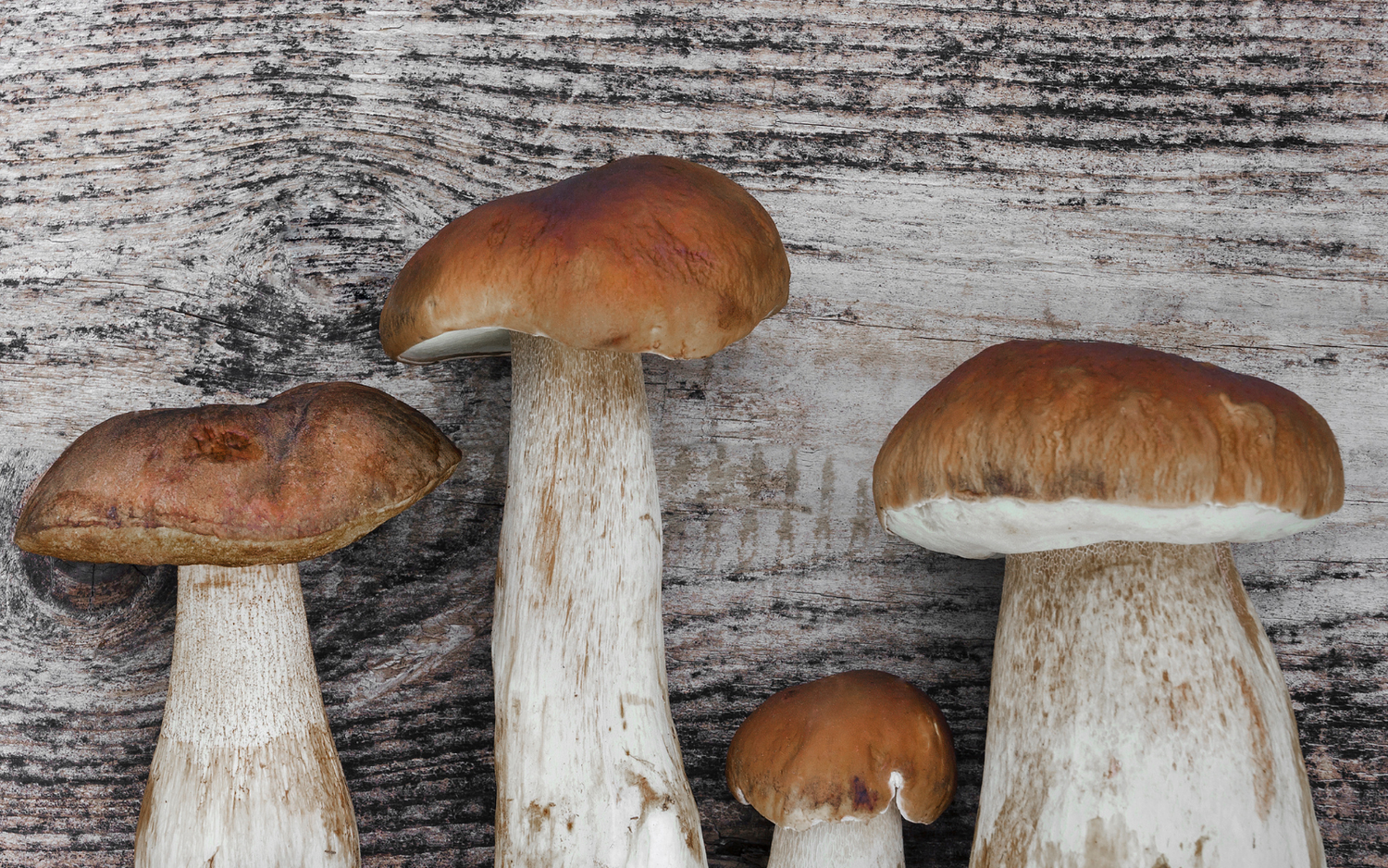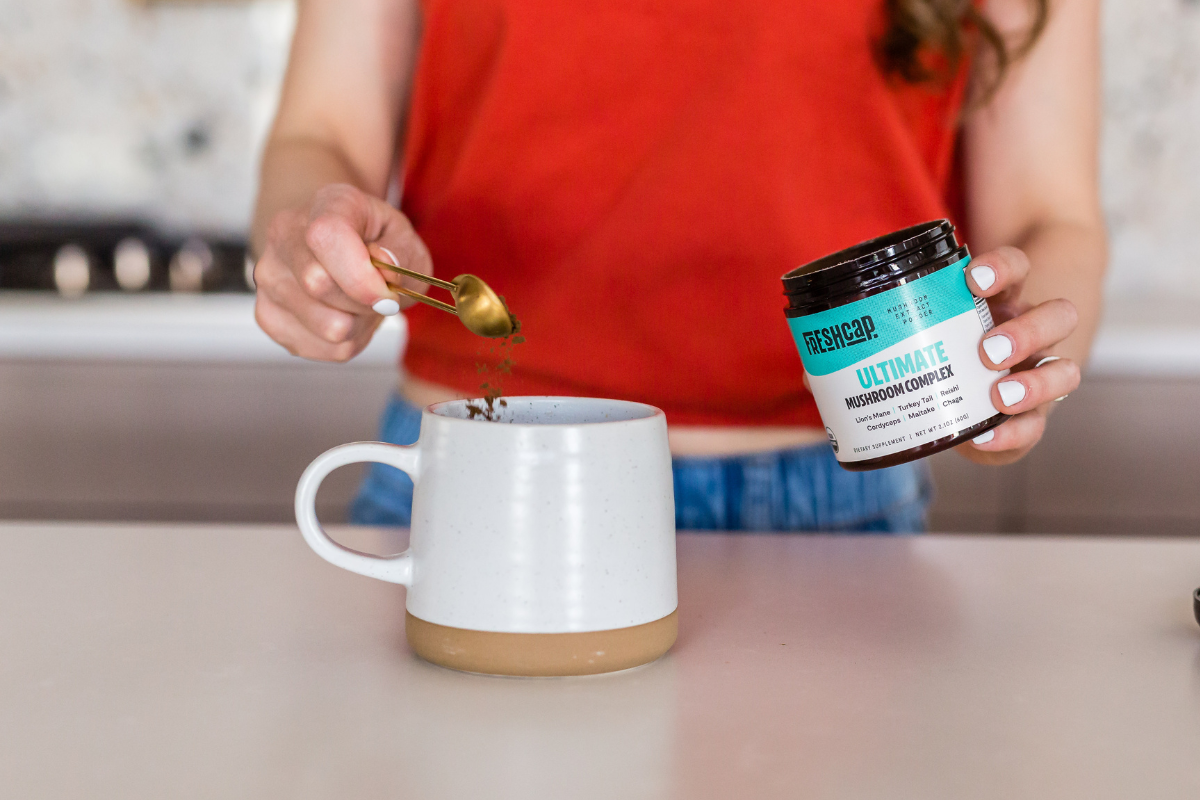Some theorize that aging can be thought of as a disease.
On a micro level, aging manifests in cell death in various parts of your body.
Skin cells, nerve cells, reproductive tissue, brain cells – cells in every part of the body eventually "give up" fighting against free radicals and die.
On a macro level, you physically see or experience these cell deaths with wrinkles, memory loss, cancer, and other diseases.
Emerging research into ETT shows that this unusual and widely unknown amino acid is one of the best natural antioxidants for fighting aging as a disease.
Let's take a closer look at l-ergothioneine and how it works to protect the body.
What is L-ergothioneine?
Ergothioneine, also known as ETT, is an amino acid initially found in the sclerotia of ergot fungus. (1) Your body needs nine essential amino acids to synthesize and build protein for muscle growth and energy. It can't make these amino acids on its own. Other amino acids are known as conditionally essential or non-essential because your body can produce them. However, that doesn't mean it's not valuable to supplement certain aminos for unique benefits. Scientists originally started researching l-ergothioneine when they discovered it in the red blood cells of certain animals. (2) Plants don't synthesize ETT and the human body can't make it on its own. However, humans and other mammals can consume foods that have ETT and plants that have absorbed the amino acid through the soil where it lies dormant.Won't I Get Ergot Poisoning?
No. Although ETT shares a name and can come from ergot fungus, it's not poisonous in any way. The European Union has stricter supplement standards than the United States and has determined that ETT supplements are safe and produce no adverse effects in adults and children over 3. (3) In the United States, the Food and Drug Administration does not regulate supplements the same way it regulates food. Instead, the FDA retroactively applies laws to supplements. In the EU, supplements are regulated and tested with the same rigor as food products.Antioxidant Effects of Ergothioneine
L-ergothioneine isn't just an amino acid. It's also an antioxidant! Specifically, research suggests that it's a cytoprotectant. In other words, ETT protects cells against toxins, free radicals, and harmful substances. Free radicals are a normal part of life. They enter the body and your cells absorb and oxidize them. Over time, your cells can't neutralize free radicals fast enough and they begin to accumulate in the body which leads to oxidative stress. Oxidative stress leads to cell death and damage. Imagine you're making a fruit salad. You chop up bananas, apples, oranges, kiwis, and strawberries. After a few hours, the bananas and apples start to turn brown because they've been exposed to oxygen and they don't have high antioxidant levels to protect themselves against oxidative damage. The oranges, kiwis, and strawberries, however, still look fresh because they do have antioxidants. If you add some lemon juice to the fruit salad, what happens? The vitamin C in lemon juice, an antioxidant, protects the apples and bananas so they don't brown as quickly. Studies have found that as an antioxidant and cytoprotectant, ETT accumulates in specific cells throughout the body that need antioxidant capacity the most to defend against free radical damage and oxidative stress. These parts of the body include- Liver
- Bone marrow
- Eyes
- Red blood cells
5 Potential Benefits of Supplementing the Antioxidant Ergothioneine
Research suggests that ETT antioxidant potential functions as an anti-inflammatory to further protect cells against physiological and neurodegenerative diseases.1. Inflammation
Research shows that as an antioxidant, ETT might defend against inflammation. (4) Rheumatoid arthritis is an autoimmune disorder marked by intense (and often unexplained) inflammation. It's possible that ETT may reduce inflammation in patients with rheumatoid arthritis. A few years ago, people were suspicious. Patients with rheumatoid arthritis tend to have elevated ergothioneine levels which led people to believe that ETT supplements would make RA symptoms worse. However, the EU ruled that that's not the case: supplementing ETT has no effect on increasing a person's risk of RA flares.2. Neurodegenerative Diseases
As a cytoprotectant, ETT is a popular supplement among Alzheimer's and Parkinson's patients. ETT supports your body's natural antioxidant defense system and may protect brain cells from oxidative damage and stress from free radicals. By protecting brain cells, its plausible to prevent brain cell death in the first place and protect against neurodegenerative diseases,3. Liver Disease
Thanks to its cytoprotectant and antioxidant potential, ETT is a favorite amino acid in patients with liver disease.4. Anti-Aging Potential
You'll often find ETT in many skincare products because of its cytoprotectant and antioxidant properties- which may protect skin cells from oxidative damage. Free radical damage and oxidative stress are major contributors to premature aging, sagging skin, and wrinkles.5. Lung Diseases
The US Department of Defense awarded a $1.34 million grant to researchers at the University of Colorado to study ETT’s antioxidant action for fighting lung diseases in combat veterans. (5)
Dietary Sources with High Ergothioneine Content
The best dietary source of ETT is – you guessed it – mushrooms. (6) Oyster mushrooms, which can be easily found at your grocery store contain high amounts of ergothioneine. Porcini mushrooms, which can be a little harder to find (they cannot be commercially cultivated) contain the highest level or ergothioneine of all the mushrooms. Only a few distinct types of fungi and mycobacteria can produce ETT content and mushrooms are the best natural source. Other foods with elevated ergothioneine levels include king crab, cereals, oats, and animals who have consumed plants holding the amino acid. Kidney beans and black beans also have high ergothioneine levels. In other words, you can create an anti-aging salad packed with mushrooms, kidney beans, black beans and drizzled with some olive oil for fatty acids.


